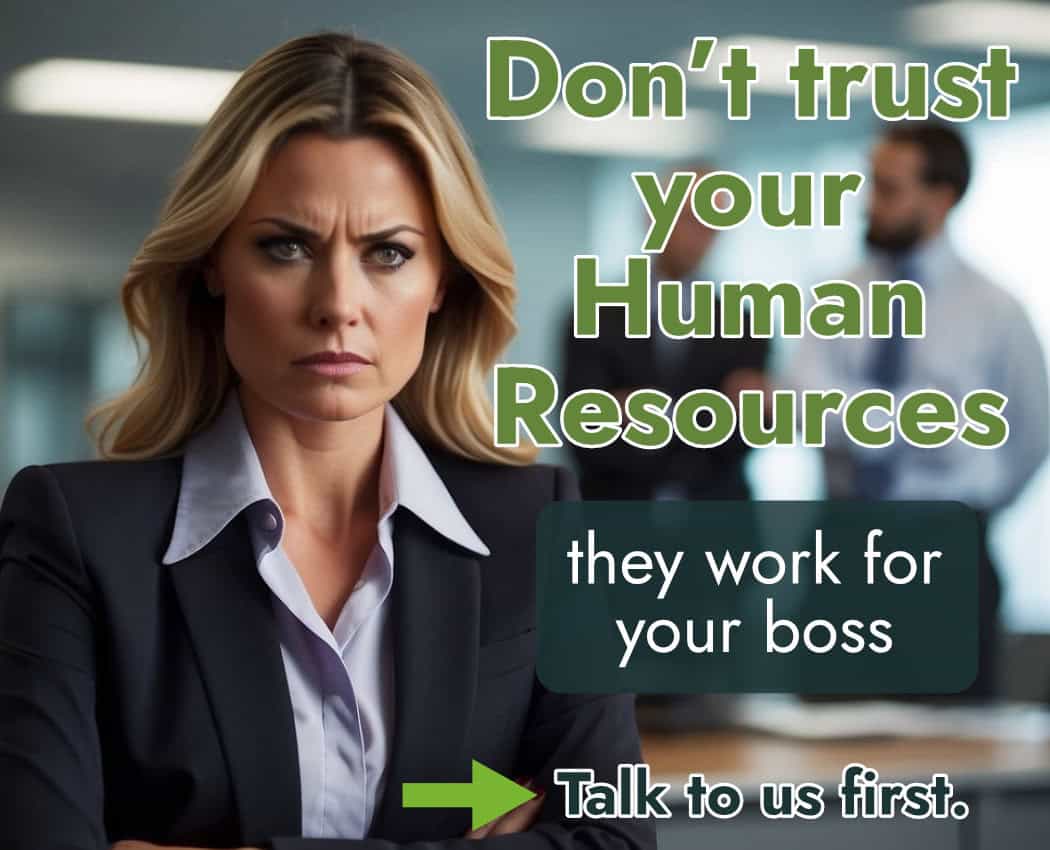
Many employees have seen how employers create their own paper trail: whether in the form of a lengthy employee file or simply a record of disciplinary notices eventually leading up to discipline and maybe even dismissal. Whereas employers are generally (or at least should be) good at maintaining a paper trail for their employees (i.e. in the form of an employee file), employees would be wise to maintain their own personal paper trail as well. Although the idea may seem simple or silly, an employee’s own personal paper trail could potentially help them if and when the time comes for a lawsuit or a formal complaint.
An employee’s own paper trail can include a variety of documentation, with things as simple as a copy of the employment offer and employment contract, to any disciplinary notices, termination letter, or signed documentation like a Release.
Creating a paper trail can be helpful in many ways and in many different scenarios, including but not limited to the following:
Building a Constructive Dismissal Claim
Constructive dismissal arises when the employee quits then brings a claim against the employer for fundamentally and unilaterally changing the employment contract or creating a hostile/toxic work environment no longer tolerable to the employee. Constructive dismissal is therefore neither a voluntary resignation nor a formal termination by the employer, but rather an action/actions or change(s) made by the employer that demonstrate their intention to no longer be bound by the employment contract, which pushes the employee to resign on the basis of constructive dismissal.
Especially in the latter scenario (creation of an intolerable work environment), a paper trail can be quite useful to help strengthen a constructive dismissal claim. If you have been subject to mistreatment/toxic work environment (whether in the form of comments, actions, written format, lack of action from the employer after submitting complaints, etc.), it is wise to document such occurrences because together, that documentation could help support your argument of a poisoned work environment.
Keep a journal of the times and circumstances of mistreatment, steps you took to try to resolve those concerns, dates you tried to discuss concerns with the individual involved, how those discussions progressed, what was done/not done, dates you brought your concerns to Human Resources/management, how those concerns were/were not addressed, etc.
Although a written log itself will not guarantee that you can make out a case for constructive dismissal, a clear record can definitely strengthen such a claim if it clearly shows a pattern of disrespect, mistreatment, and/or lack of support and action from the employer to address your workplace concerns.
In addition to creating a paper trail, keep in mind that your own emotional and mental well-being is important. If you need help accessing resources or services due to workplace harassment/bullying, you can contact Alberta Bullying. Seeking assistance from Alberta Bullying or other similar services can also help strengthen a case by demonstrating how you have been adversely affected by workplace mistreatment/harassment/bullying.
Disputing Improper Disciplinary Action
Employees are sometimes disciplined or given warning letters with which they do not actually agree, whether because they are false, mischaracterized, or the situation simply misunderstood. Although an employee may be afraid to explain the truth of what happened or dispute the disciplinary action taken against them, it is wise to do so, preferably in writing (professionally and factually, of course). If the employer eventually creates a serious enough paper trail of discipline against you, they may eventually claim they have “just cause” to dismiss you. That being said, not all “just cause” allegations will meet the legal threshold. Especially if you can show that you clearly disputed improper discipline and/or tried to clarify misunderstandings surrounding the discipline, the employer’s “just cause” allegation may not be as strong as they believe it to be.
Documenting Your Mitigation Efforts
If you are in the midst of pursuing a wrongful dismissal claim, a court expects you to take reasonable steps to minimize your losses. This concept is referred to as “mitigation”, and includes all efforts made to minimize the losses flowing from the dismissal, including but not limited to: updating your resume, keeping a journal of jobs to which you have applied/copy of your job applications, keeping a journal of interview dates, etc. If you cannot prove that you have taken steps to mitigate (minimize) your losses, the employer may try to argue that you failed to mitigate, which could reduce the value of your claim.
Documenting Verbal Interactions
Sometimes interactions are verbal and the other individual involved may refuse to communicate in writing. If that is the case, you can send follow-up emails following an important discussion to confirm what was discussed and to ensure all matters were understood correctly. Doing so could prevent a dispute from occurring later on wherein someone tries to argue that certain discussions never occurred, concerns were never raised, etc. If you can then point to a follow-up email that you sent on a specific date to which the recipient never disputed the contents of the email, this could help build your case and your side of events. If possible, you can simply request that communications be made via email. If they refuse for some reason, send those follow-up emails following relevant verbal interactions.
Strengthening Your Side of Events – Documenting Contemporaneously with Events
It is also best to document contemporaneously with events (i.e. during or right after the event). For instance, a journal in which you document events the same day they happen will present as better evidence than a journal you created today about events that you vaguely remember from months or a year ago. If there are contradicting journal of events (between you and your employer), a judge would likely be more inclined to believe the documentation that was created contemporaneously with the events in question.
Although creating your own paper trail is valuable, you should of course do so using good judgment. Find a healthy balance of documenting important and crucial events (mistreatment, harassment, bullying, discriminatory comments, dates you have filed complaints, copies of those complaints, etc.); however, you do not want to paint yourself as an untrustworthy and suspicious employee by documenting trivial or unnecessary things.
Although creating your own paper trail may seem too simple or unnecessary, and you may never need it, having your documentation ready can save you significant time and stress from scrambling to gather documentation at the last minute. Doing so can also help in that you will not be left struggling to remember important dates of events from months ago.
In each circumstance stated above wherein building a paper trail can be useful, we recommend you seek legal advice before taking any specific action based on that paper trail (before pursuing a constructive dismissal claim, disputing a disciplinary notice, filing a complaint, etc.).

We currently have three offices across Alberta — Edmonton, Calgary, and Red Deer. We serve the entire province of Alberta (and BC). We also have the infrastructure to work with any of our clients virtually — even the furthest regions of Alberta.
Call 1 (844) 224-0222 (toll free) to get routed to the best office for you or contact us online for general inquiries.
We also have a dedicated intake form to help you get the ball rolling. Our intake team will review your specific case and advise you on the next steps to take as well as what to expect moving forward.
Our offices are generally open 8:30 a.m.—4:30 p.m., Mon—Fri.


Chelsea Scott
WORKPLACE LAWYER
Chelsea focuses on representing clients and providing legal advice related to workplace and employment issues. Some of the areas of law that Chelsea focuses on include, but are not limited to, wrongful dismissal, severance package review, discrimination, disputes during employment, and workers compensation.
PRIVACY NOTICE: Any information you provide to our office — whether your personal information or employment/employer details — will be treated as strictly confidential and will not be disclosed to your employer or to any other third party. So, please be reassured that you can talk openly to our capable Intake Paralegals worry free. Fill out an Online Inquiry or call us now, your information will be in safe and helping hands.
The Legal Review Process by Taylor Janis Workplace Law
- Taylor Janis strives for high-quality, legally verified content.
- Content is meticulously researched and reviewed by our legal writers/proofers.
- Details are sourced from trusted legal sources like the Employment Standards Code.
- Each article is edited for accuracy, clarity, and relevance.
- If you find any incorrect information or discrepancies in legal facts, we kindly ask that you contact us with a correction to ensure accuracy.


